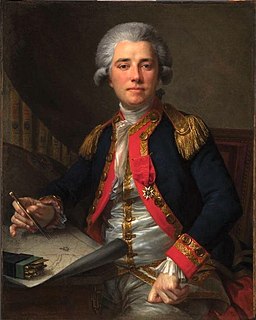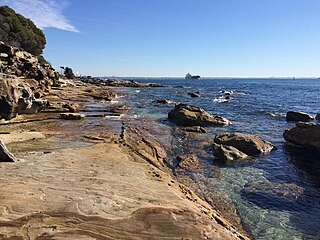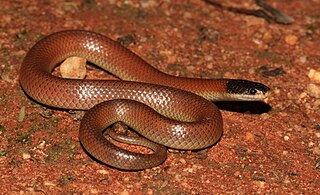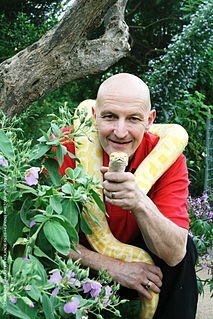
Jean François de Galaup, comte de Lapérouse, often called simply Lapérouse, was a French naval officer and explorer. Having enlisted at the age of 15, he had a successful naval career and in 1785 was appointed to lead a scientific expedition around the world. His ships stopped in Chile, Hawaii, Alaska, California, Macau, Japan, Russia, and Australia, before wrecking on the reefs of Vanikoro in the Solomon Islands.

The Kamay Botany Bay National Park is a heritage-listed protected national park that is located in the Sydney metropolitan region of New South Wales, in eastern Australia. The 456-hectare (1,130-acre) national park is situated approximately 16 kilometres (9.9 mi) south-east of the Sydney central business district, on the northern and southern headlands of Botany Bay. The northern headland is at La Perouse and the southern headland is at Kurnell.

La Perouse is a suburb in south-eastern Sydney, in the state of New South Wales, Australia. The suburb of La Perouse is located about 14 kilometres (8.7 mi) southeast of the Sydney central business district, in the City of Randwick.

Taipans are snakes of the genus Oxyuranus in the elapid family. They are large, fast-moving, highly venomous, and endemic to Australia and New Guinea. Three species are recognised, one of which, the coastal taipan, has two subspecies. Taipans are some of the deadliest known snakes.

Russell's viper is a venomous snake in the family Viperidae native to the Indian subcontinent and one of the big four snakes in India. It was described in 1797 by George Shaw and Frederick Polydore Nodder, and named after Patrick Russell, who wrote about it in his 1796 work An account of Indian serpents, collected on the coast of Coromandel.

Atheris is a genus of venomous vipers known as bush vipers. They are found only in tropical subsaharan Africa and many species have isolated and fragmented distributions due to their confinement to rain forests. In an example of convergent evolution, they show many similarities to the arboreal pit vipers of Asia and South America. Seventeen species are currently recognized.

Austin Stevens is a South African-born Australian naturalist, herpetologist, wildlife photographer, documentarian, television personality, and author. He is best known as the host of the Animal Planet nature documentary series Austin Stevens: Snakemaster (2004−09).

The Australian Reptile Park is located at Somersby on the Central Coast, New South Wales in Australia. It is about 50 kilometres (31 mi) North of Sydney, and is just off the M1 Pacific Motorway. The Park has one of the largest reptile collections in Australia, with close to 50 species on display. The wide variety of reptile species at the Park includes snakes, lizards, turtles, tortoises, Komodo dragons, American alligators and crocodiles.
A Snake pit is a place of horror, torture and even death in European legends and fairy tales.
Raymond Terrence Hoser is an Australian snake-catcher and author. Since 1976, he has written books and articles about official corruption in Australia. He has also written works on Australian frogs and reptiles. Hoser's work on herpetology is controversial, including his advocacy of the surgical alteration of captive snakes to remove their venom glands and his self-published herpetological taxonomy, which has been described as "taxonomic vandalism".

Sackville (Doorumbolooa) is a suburb of Sydney, in the state of New South Wales, Australia. It is located in the City of Hawkesbury and at the 2016 census had a population of 298, thirteen of whom identified as Aboriginal and Torres Strait Islander.
Snake Man, Snake Men or snake people may refer to:
Eric Arthur Frederic Worrell (MBE), was an Australian naturalist, herpetologist and writer whose collection of snake venom was essential in the production of snake anti-venom in Australia.

Dwyer's snake also known as the whip snake and the variable black-naped snake, is a species of venomous snake in the family Elapidae. The species is endemic to Australia, where it is found from New South Wales to South Queensland. While closely related to Australian sea snakes, P. dwyeri is a terrestrial reptile.

Geraint Wyn Hopkins, otherwise known as Geraint the Snakeman, is a television personality known for his work with reptiles. He has presented programmes on exotic pets in the UK and appeared on a number of programmes on animals, pets, ghosts and local affairs. He also runs Ghost Watch Wales, a paranormal investigation business, and is credited with inviting Most Haunted to a number of locations in Llanelli, Carmarthenshire and Port Talbot.
James Roy Kinghorn, generally known as Roy, or J. R. Kinghorn, was an Australian naturalist, a longtime curator at the Australian Museum, and a noted lecturer and broadcaster.
Kenneth R. Slater was an Australian engineer and herpetologist. Slater's deliveries of snake venom were instrumental in the development of antivenom for several species.
John Cann is an Australian athlete. He held an Australian record in hurdles as well as New South Wales state records in hurdles, discus and javelin. He was described in The Canberra Times in 1957 as one of Australia’s best all-round athletes. He represented Australia in the 1956 Summer Olympic Games in Melbourne finishing 10th in the decathlon.
Richard Walter Wells is an Australian herpetologist. He is known for editing the Australian Journal of Herpetology in the 1980s, in which he and C. Ross Wellington wrote and published three papers without academic peer review that proposed significant changes to the taxonomy and nomenclature of Australian reptiles and amphibians. In the 2000s, Wells self-published herpetological research in the Australian Biodiversity Record. The scientific names he proposed therein are the subject of a boycott begun in 2013 by some members of the herpetological community.


















